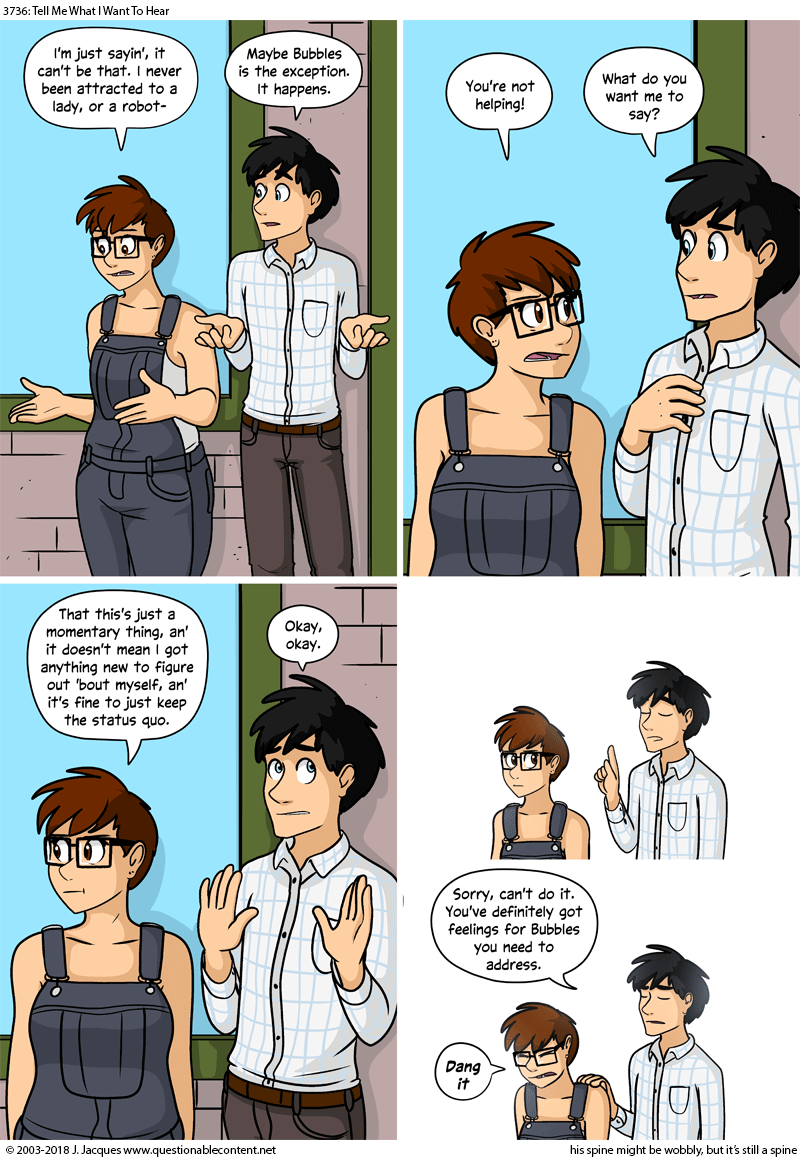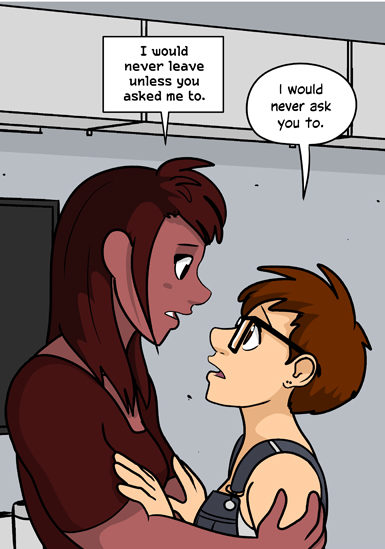Ever since 2012, there’s been a dramatic shift when it comes to queer characters – there’s slowly more and more of them in TV shows, movies, books, but most prominently in webcomics.
However, for some fans, the question arises – how many queer characters is too many? What’s ‘believable’ for a single creative work? Jeph Jacques’s Questionable Content has been the target of many of these questions, especially in regards to his latest storyline, which puts the main female lead – Faye Whitaker – in a relationship with a woman for the first time.
Questionable Content’s Queer Characters
Online and updating for almost fifteen years, Questionable Content has been through a number of changes in its long run. The comic was initially a ‘will they won’t they’ between the main characters Marten and Faye. It abandoned this format after the first 500 strips, and both Marten and Faye pursued other romantic interests.
It’s never been a secret in the comic that its main cast includes queer characters; Dora has actively identified as bisexual since some of her earliest appearances. However, in the last few years, more and more queer characters have joined the main cast. Claire, Marten’s current girlfriend, is a trans woman, and Elliot (hapless bartender and gentle giant) recently revealed that he is bisexual.
Faye, however, has always been one of the more concretely heterosexual characters – at least in the eyes of fans. So as her friendship with a military robot blooms into something more, some readers have been taking offense.
YOUR TEARS ARE DELICIOUS TO ME pic.twitter.com/ICB1al3E4d
— Passive-Aggressive Retsuko (@jephjacques) May 17, 2018
It’s an interesting sight to see. One relationship was fine. However, Claire as the first trans character was ‘too far’ at the time. Apparently, Faye’s new relationship is ‘too far’ for many readers once more.
What does ‘Too Far’ Mean?
The backlash to Questionable Content, in context, is puzzling. While not all readers are coming from the same perspectives, accusations of the comic ‘no longer being realistic’ often fail to take into account the comic’s setting: Northampton, Massachusetts. The reality is that Northampton has the highest number of lesbians per capita in the entire country. This is before considering Jacques’s often-quoted assurance on the QC setting and how it is very much not our world, rendering complaints of realism more than a little moot.
“Something people do not often realize is that the world in which QC takes place is considerably stranger than our own. You’d think that with all the little talking robots running around everywhere that this would be obvious, but I am consistently surprised at how often people take it for granted.” – Jeff Jacques 2005
Furthermore, there are much queerer and stranger comics out there. It’s odd to hear how QC’s blended cast is ‘too gay’ when it coexists with indie comics such as Lumberjanes, other webcomics like Sister Claire (with, so far, nary a straight person to be seen), and the whole other host of diverse comics out there. By heavy contrast, Questionable Content’s main cast numbers in the several dozens. Only six of them identify as anything other than heterosexual and/or cisgender.
A careful reread of the earliest QC strips also shows most of Faye’s assertions of heterosexuality directed at Dora. While it’s been an awfully long time since those early strips, Dora made a habit of sexual advances towards Faye. Perhaps it’s not such a surprise that Faye’s attraction to women wasn’t immediately apparent, to herself or others.
Faye discusses this newly-burgeoning part of her sexuality with Marten below:

Managing Expectations
It’s the constant maxim of creative work – you can’t please everybody. It’s doubly true for queer representation, where a choice that alienates some readers will attract others, and make even more cry from happiness.
i would say that @jephjacques's comic is a good metaphor for middle school in that it started fairly straight but eventually everyone you know is gay. it's delightful
— Claire O. (@datamancy) May 18, 2018
https://twitter.com/jephjacques/status/996938956389343233
Jacques has made it clear which voices he wants to uplift, and he does it with gleeful, unabashed support for the queer community.
So for those readers still puzzled by how many queer characters there seem to be, not just in Questionable Content, but everywhere? It may be time to take a deep breath, relax and accept that this is rapidly becoming a new normal both online and offline. It’s the future, folks. And it’s a good thing.


